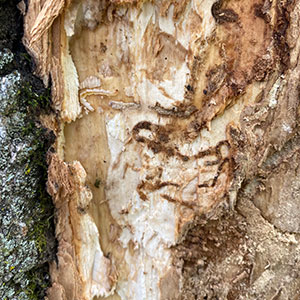We are fortunate to have three great out-of-state speakers join us at the Kansas Turf and Landscape Conference this year.
Register online before this Friday, November 22 for a discounted rate!
 Dr. Becky Bowling (left) is the Extension Specialist in the Plant Science Department at the University of Tennessee. Her research and extension efforts have focused on evaluating and communicating best management practices for turfgrass to promote environmental stewardship and resource-use efficiency in turfgrass systems and related urban green spaces with an emphasis on water efficiency, water capture, and water quality protection.
Dr. Becky Bowling (left) is the Extension Specialist in the Plant Science Department at the University of Tennessee. Her research and extension efforts have focused on evaluating and communicating best management practices for turfgrass to promote environmental stewardship and resource-use efficiency in turfgrass systems and related urban green spaces with an emphasis on water efficiency, water capture, and water quality protection.

Dr. Wendell Hutchens (left) is an assistant professor of turfgrass science in the Horticulture Department at the University of Arkansas. His main areas of expertise are turfgrass pathology, precision management of turfgrass pests using emerging technologies, and winterkill mitigation strategies in warm-season turfgrasses. His research program is centered around maintaining healthy turfgrass and combating turfgrass stressors with traditional cultural and chemical practices, as well as with cutting-edge new technology.
 Dr. Fred Whitford (left) is the Clinical Engagement Professor and Director, Pesticide Programs at Purdue University. His focus is on extension outreach, pesticide safety education, pesticide registration and regulation, insurance, and environmental safety audits.
Dr. Fred Whitford (left) is the Clinical Engagement Professor and Director, Pesticide Programs at Purdue University. His focus is on extension outreach, pesticide safety education, pesticide registration and regulation, insurance, and environmental safety audits.
Check out the KTF Turf Conference Document to see when these speakers will be presenting. A great opportunity to learn information about turf and landscape management and to earn pesticide credit. More information can be found on our website at: https://www.k-state.edu/turf/events/index.html
 GCSAA’s First Green program brings students out of the classroom to a local golf course for a fun, hands-on field trip to explore the living laboratory that is the golf course! Since 2018, over 15,000 students nationwide have participated in First Green learning about the STEAM (science, technology, engineering, art and mathematics) skills used every day by golf course superintendents and their teams. Presenters will share their insight on First Green, including the numerous events that have taken place in Kansas, and the impact it is having on schools and students and how you can get involved in your community.
GCSAA’s First Green program brings students out of the classroom to a local golf course for a fun, hands-on field trip to explore the living laboratory that is the golf course! Since 2018, over 15,000 students nationwide have participated in First Green learning about the STEAM (science, technology, engineering, art and mathematics) skills used every day by golf course superintendents and their teams. Presenters will share their insight on First Green, including the numerous events that have taken place in Kansas, and the impact it is having on schools and students and how you can get involved in your community.






 The 74th Annual Kansas Turf & Landscape Conference will be held on December 4 & 5 (Wednesday and Thursday) at the Hilton Garden Inn, Manhattan. The conference is an excellent way to learn about turf and landscape management, visit with old friends, network with new ones, and see all the latest products and supplies from local and national vendors.
The 74th Annual Kansas Turf & Landscape Conference will be held on December 4 & 5 (Wednesday and Thursday) at the Hilton Garden Inn, Manhattan. The conference is an excellent way to learn about turf and landscape management, visit with old friends, network with new ones, and see all the latest products and supplies from local and national vendors.



